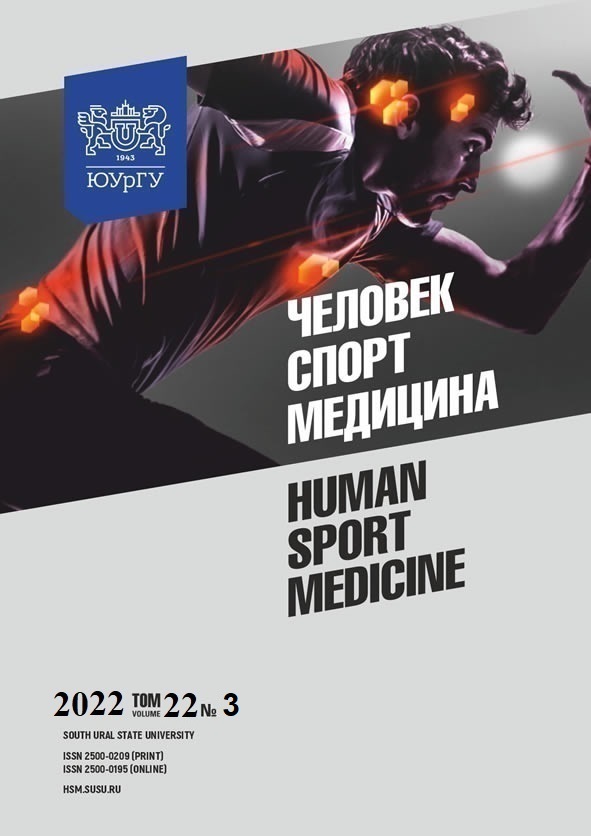INDIVIDUAL TYPOLOGICAL APPROACH TO HEART RATE VARIABILITY IN HOCKEY PLAYERS AGED FROM 7 TO 16 YEARS
Abstract
Aim. The paper aims to identify the age-related typological features of heart rate variability (HRV) in hockey players aged from 7 to 16 years. Materials and methods. HRV parameters of hockey players aged from 7 to 16 years were obtained (n = 262; defensemen and forwards). The control group consisted of physically active boys aged from 7 to 8 years (n = 34). The predominant type of autonomic regulation of heart rate was identified by the method of N. Shlyk. Results. Under specific exercise in hockey players aged from 7 to 16 years, the typological features of heart rate were formed. Regardless of age, obvious differences were found in MxDMn, SI, TP, and HF. The response of the parasympathetic nervous system to orthostasis was more individual. However, type I with a moderate predominance of central regulation was characterized by increased values of 30:15 in 13 years and decreased ones in 14 years. Conclusion. The article provides the reference range of HRV parameters in hockey players aged from 7 to 16 years with respect to their age and type of regulation [25; 75 percentiles].
References
References on translit
Copyright (c) 2022 Human. Sport. Medicine

This work is licensed under a Creative Commons Attribution-NonCommercial-NoDerivatives 4.0 International License.















